SLC21W3 // Making Cake Filling

1. Have you ever prepared cream to fill your cakes at home? Tell us about your experience.
It was a truly enjoyable and fulfilling experience for me to make cake filling cream at home. First, the components were collected, which included heavy cream, powdered sugar, and vanilla essence. I decided to prepare a simple filling because whipped cream is light, airy, and complements almost any cake flavour. I started by chilling the mixing bowl and whisk attachments to aid in the faster and more efficient whipping of the cream.
I then used a hand mixer to start beating the chilled heavy cream on medium speed after pouring it into the bowl. After a few minutes, I added a teaspoon of vanilla essence for flavour and gradually added powdered sugar, about two teaspoons at a time, to sweeten the cream.
I turned the speed up to high and whipped until stiff peaks formed as the cream started to thicken. Once the peaks are solid enough to keep their shape, you should stop, or otherwise you run the risk of converting the cream into butter. The ideal texture for a cake filling is smooth, light, and airy.
I added a little unflavoured gelatin that I had dissolved in warm water to make sure the cream would not get too runny and would hold up between the cake layers. If you plan to serve the cake after a few hours, this step helps stabilise the cream and prevent it from crumbling over time. The gelatin offers a delicate stiffness that works nicely for cake fillings without changing the flavour.
I carefully placed the cream between the cake layers after it was ready. In order to keep the filling from leaking out when the top layer was applied, I took care to leave a thin border around the corners. The rich, velvety texture and gorgeous spread of the cream were the ideal accompaniment to the delicate cake.
The end product was a tasty, creamy filling that everyone enjoyed, but the entire process required some effort, particularly determining the ideal ratio of sweetness to texture. Knowing that I had made the filling from scratch at home gave me a huge sense of satisfaction, and the cake looked expertly done.
2. Prepare the pastry cream (detail ingredients and step by step) and indicate whether you followed the recipe we provided or prepared your traditional recipe for pie filling.
Here's a detailed recipe for making pastry cream, which can be used for pies or other desserts like éclairs, tarts, or cakes.
The following ingredients are needed to make pastry cream: -1/2 cup (100g) granulated sugar- 1/4 cup (30g) whole milk- 2 cups (480ml) 4 large egg yolks, 1/4 teaspoon salt, and cornflour Two tablespoons of room-temperature unsalted butter One teaspoon of vanilla extract For added flavour, you can optionally add a scrap of vanilla pod or 1 teaspoon of vanilla bean paste.
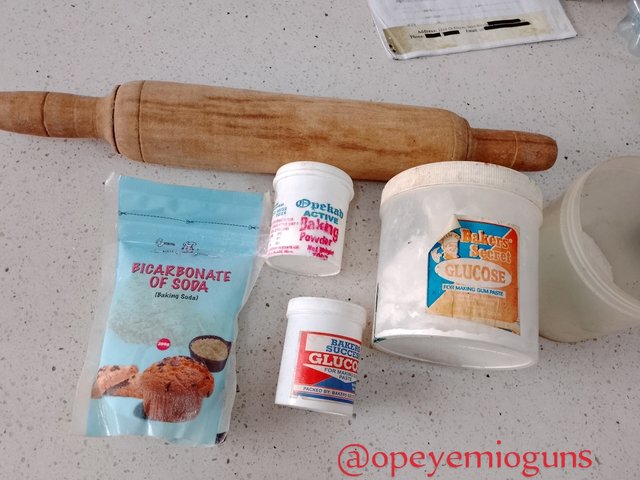
Step-by-Step Instructions:
Heat the Milk:
Pour the whole milk into a medium saucepan and heat it over medium heat until it is hot but not boiling. To keep it from burning, stir from time to time. Scrape the seeds into the milk that is heating after removing the vanilla pod. Alternatively, you can add the vanilla pod immediately after simmering the milk.Whisk the Dry Ingredients:
Salt, cornflour, and granulated sugar should all be combined in a different bowl. Whisk together these dry ingredients until well combined.Whisk the Egg Yolks:
Whisk the egg yolks in a separate bowl until they are smooth and have a slightly lighter hue.Temper the Eggs:
Whisk continuously as you slowly pour about 1/2 cup of the hot milk into the egg yolks to prevent the eggs from being scrambled. This process, known as "tempering," makes sure the eggs don't cook through. Whisk continuously as you pour this egg mixture back into the pot with the remaining hot milk after the eggs have warmed up.Cook the Pastry Cream:
A tiny bit of liqueur, like Grand Marnier, Chambord, or rum, gives your pastry cream a classy look. The alcohol will impart a subtle taste without dominating the cream. Just add a teaspoon to a tablespoon, depending on how strong you want the flavour.Incorporate Vanilla and Butter:When the mixture thickens to a custard-like consistency, turn off the heat. Add the vanilla essence (or paste) and unsalted butter and stir until well combined.
Allow the pastry cream to cool: To stop a skin from forming, pour the pastry cream into a clean bowl and cover with plastic wrap. Before using, let it cool and solidify in the refrigerator for at least two hours. Additionally, it will help in enhancement, the texture and the flavour of the pastry.
This is a really traditional recipe that closely resembles conventional pastry cream recipes. I stuck to the general technique I usually use for pie filling, even though I didn't follow any specific recipe that was given to me because I didn't have one on hand. I didn't feel the need to alter the tried-and-true approach because it routinely produces positive results. This classic recipe produces a rich, smooth filling that is perfect for pie filling or as a foundation for other sweets since it has the perfect amount of sweetness and richness.
3. What was the most difficult thing for you when preparing the filling?
Achieving the ideal consistency can be the most challenging aspect of making pastry cream. It all comes down to time and heat management to keep the mixture from lumping or curdling. The most important step is arguably
tempering the eggs, which involves introducing the hot milk to the egg yolks gradually without scrambling them. A difficult-to-repair gritty texture can result from adding the milk too rapidly or too hot. To guarantee a smooth, uniform mixture, patience and continuous whisking are needed.
Achieving the Perfect Thickness: It can be difficult to determine when pastry cream is thick enough, even though it thickens as it cooks. It may get overly thick or even split if you cook it for too long or on too high of a heat, but it may become too runny if you cook it for too little time. It takes practice to achieve the ideal pudding-like consistency.
Preventing Lumps: There is always a chance that lumps will form in the mixture, even with regular stirring. This may occur if the heat varies too much or if the cornflour is not completely integrated. You want the filling to be silky smooth for the ideal pie or cake, so straining the pastry cream after cooking can assist, but it's still a nerve-racking task.
But after i finished those steps, it's lot simpler, and the velvety, creamy filling makes it all worthwhile!
4. What additional ingredients do you think can be added to the pastry cream to give it a special touch?
I can experiment it with different components that add distinct flavours, textures, or depth to my pastry cream to give it a special touch. Here are some suggestions for other ingredients you could use:
1. Citrus Zest:
- Lemon or Orange Zest: A teaspoon of lemon or orange zest added to heated milk adds a citrus, fresh flavour and scent that can counterbalance the cream's richness. If you want a smooth texture, you can strain it out after heating.
2. Espresso or Coffee:
- Espresso Powder or Strong Brewed Coffee: A tasty coffee-flavored pastry cream can be made by mixing a few tablespoons of strong coffee or a teaspoon of espresso powder into the milk. This is ideal for giving your fillings a classy twist or serving with chocolate-based sweets.
3. Spices:
- Cinnamon, Nutmeg, or Cardamom: A dash of nutmeg or cinnamon can give the cream a warm, fragrant taste that makes it perfect for spiced pies or sweets with a fall theme. Additionally, cardamom can give a fragrant, exotic tone that goes well with some fruits or pastries made with nuts.
4. Chocolate:
- Melted Chocolate: A rich, creamy chocolate filling can be made by stirring some melted chocolate (white, milk, or dark) into the thickened pastry cream. For a smooth, rich treat, melt around 4 ounces of chocolate and mix it into the pastry cream..
5. Alcohol:
- Liqueurs: Adding a splash of liqueur, like Grand Marnier, Chambord, or rum, gives your pastry cream a grown-up twist. The alcohol will impart a subtle flavor without overwhelming the cream. Just add a teaspoon to a tablespoon, depending on how strong you want the flavor to be.
6. Almond Paste or Extract:
- Almond Paste: Turn off the heat when the mixture thickens to the consistency of custard. Add the vanilla essence (or paste) and unsalted butter and stir until well combined. The butter make the pastry creamy, smooth and glossy in texture.
7. Vanilla Bean:
- Vanilla Bean: A fresh vanilla bean can be used in place of extract if you wish to add even more luxury. Add the seeds to the milk after scraping them out of the pod. The pastry cream will have a stronger, more genuine vanilla flavour as a result.
8. Coconut Milk or Cream:
- Coconut Milk: You may give your pastry cream a tropical twist by substituting coconut milk or cream for some or all of the whole milk. Fruits like pineapple or mango go well with coconut because of its creaminess, which adds richness.
9. Fruit Purees:
- Strawberry, Raspberry, or Mango Puree: Add a tablespoon or two of fruit puree (you can sieve the puree to remove seeds or pulp for a smoother texture) to the pastry cream once it has cooled to make a vivid fruit-flavored filling.
10. Salted Caramel:
- Caramel Sauce: Incorporating homemade or store-bought salted caramel sauce will enhance the creamy texture with a rich, buttery sweetness and a touch of salt. It's a wonderful complement to chocolate or a way to give fruity pies more depth.
11. Herbs:
- Mint or Basil: A cool, herbaceous flavour can be produced by infusing the milk with mint or basil leaves, much like you would with vanilla. To leave a subtle herbal flavour in the cream, you can drain the leaves before adding the egg yolks.
12. Honey or Maple Syrup:
- Honey or Maple Syrup: A deeper, more complex sweetness and a hint of floral or caramel-like flavour can be added to the pastry cream by substituting honey or maple syrup for some of the sugar.
You can add any of these components to achieve the desired flavour profile. You may create a pastry cream for your pies, tarts, or cakes that is intriguing and different by combining a few of these.
5. Do you have any special tips for making custard? Share them.
Making custard might be a bit tough, but with the appropriate techniques, you can get a smooth, creamy, and perfectly set custard every time. Here are some particular strategies that can help you perfect your custard:
Use Fresh Ingredients: Whole milk and premium eggs provide a rich, velvety texture.
Temper Eggs Slowly: To prevent curdling, whisk the eggs while adding hot milk gradually.
Cook Gently To avoid lumps, use moderate heat and stir frequently; never let it boil.
Verify Consistency: When a line remains in place and it coats the back of a spoon, it is ready.
Strain for Smoothness: To get rid of any tiny lumps or pieces, strain the custard.
Cool Properly: To prevent the formation of skin, cover with plastic wrap that touches the surface.
These instructions always result in a smooth, creamy custard!
There's a particular product of custard has both milk and sugar, it's called 3 in 1 by Checkers, all that you need is pour hot water
Below is step by step how I made it in easy way:
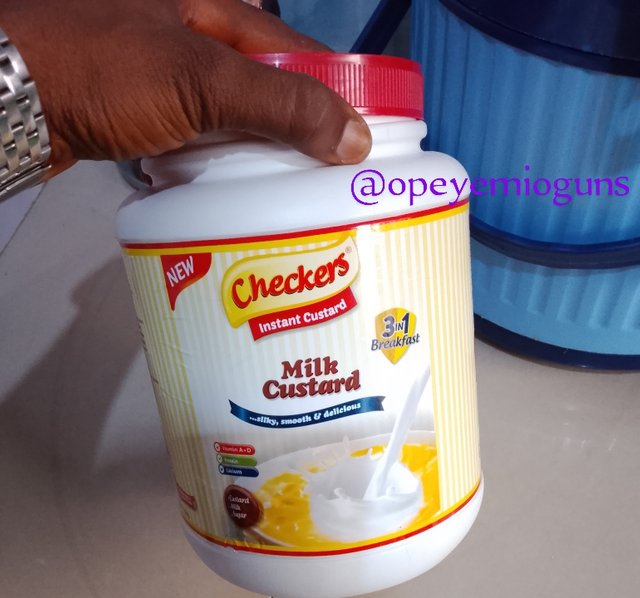
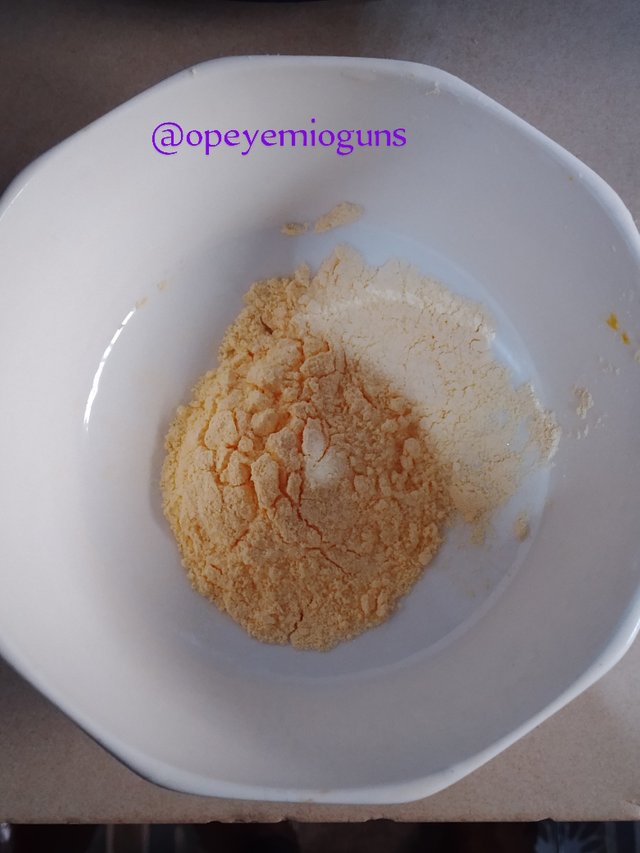
Raw
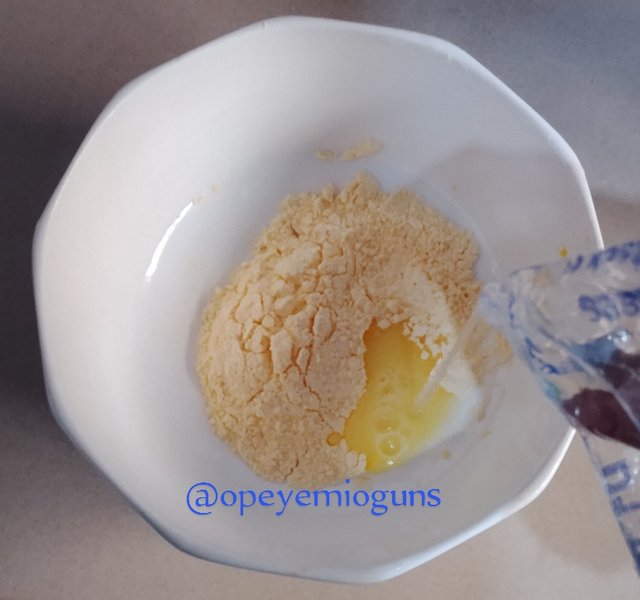
Adding cold water
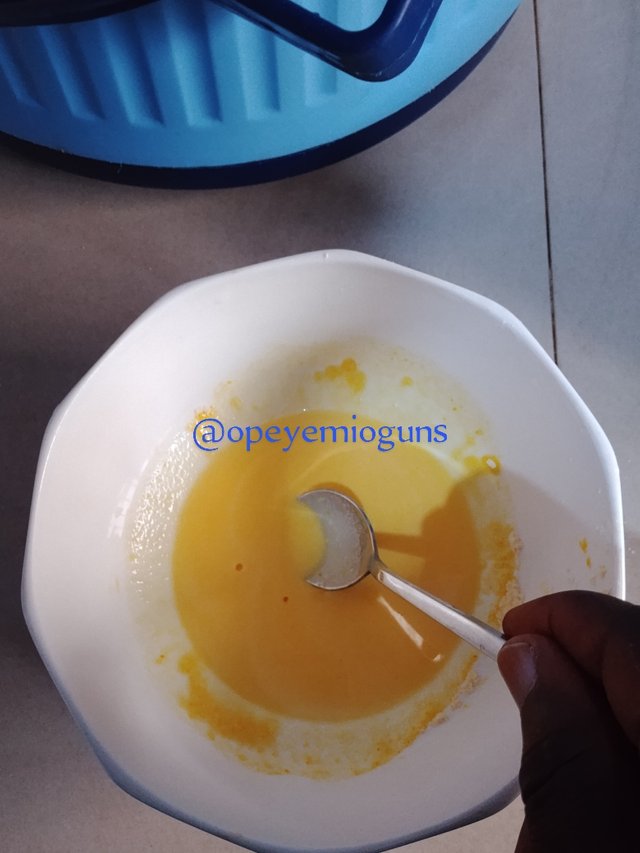
Mixing it with cold water
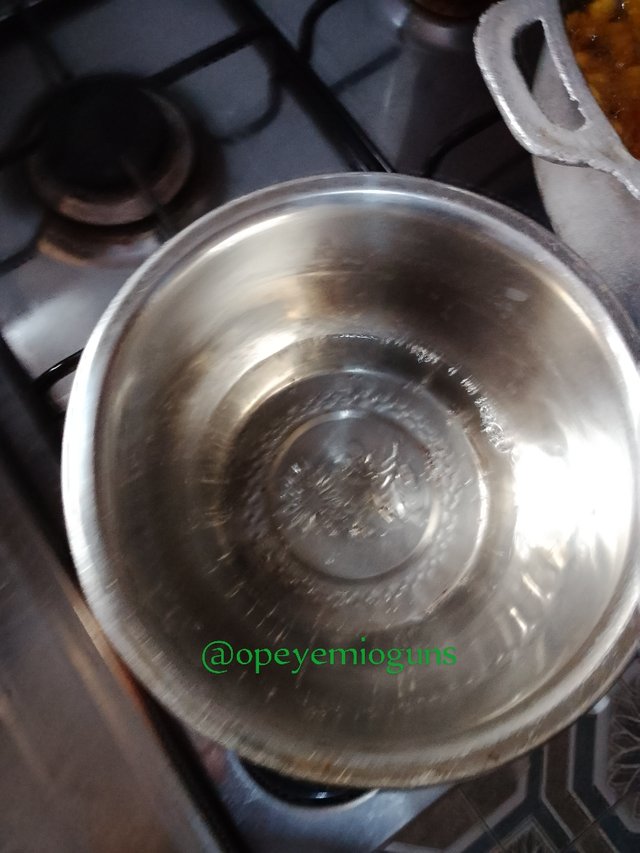
Hot water
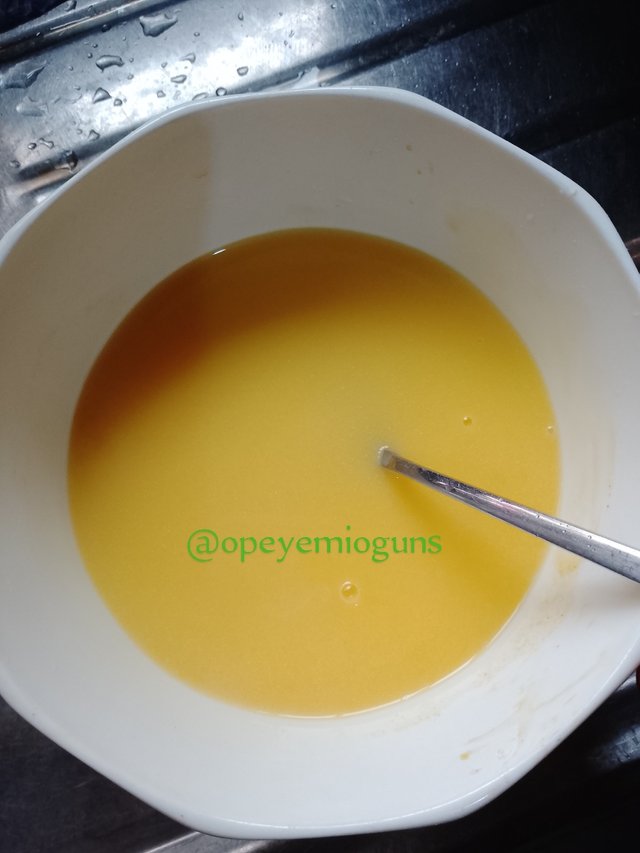
Ready to eat
Hello teacher @dasudi
Hey @princefm @olawalium @cassar you want to participate!!??
Congratulations, your post has been upvoted by @scilwa, which is a curating account for @R2cornell's Discord Community. We can also be found on our hive community & peakd as well as on my Discord Server
Felicitaciones, su publication ha sido votado por @scilwa. También puedo ser encontrado en nuestra comunidad de colmena y Peakd así como en mi servidor de discordia
Thank you
https://x.com/opeyemioguns3/status/1856274083756888479?t=hBSqNvq1370E-EbnSDirbA&s=19